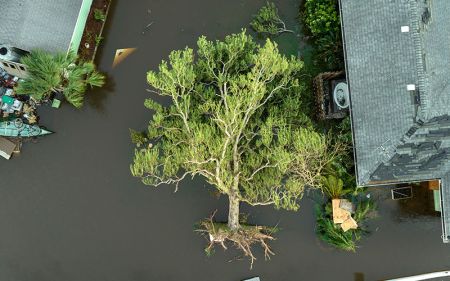What We Do
Metrics

360 metrics-based approach to quantify and sustainably enhance resilience
Resilience needs to be quantified to be improved
Our methodology is based on a bottom-up inclusion of all major contingents and stakeholders organized in bespoke metrics, models, tools and software.

Infrastructure
In cases of extreme events in regions with highly developed and complex infrastructure networks, the inter-dependency between structural damage and system functionality is key for assessing social impact and financial cost. One of the challenges associated with informed disaster risk mitigation and management of such networks is the quantification of resilience in a feasible, meaningful, and pragmatic manner.
Meta-Resilience indicators include:
- bespoke analysis of the integrity of structures, geostructures, systems and systems of systems.
- bespoke deterministic and probabilistic quantification of the multiple hazards that the infrastructure is exposed to.
- a multi-dimensional (i.e., structural, geotechnical, transportational and financial) framework that permits consideration of damage, repair rates and downtime in the decision-making process of preparerdness and strengthening
Resilience indicators are key for the infrastructure stakeholder to:
- assess, understand and mitigate the risk of exceessive cost and downtime due to a natural or anthropogenic disaster.
- define effective resilience enhancement strategies for critical infrastructure
- assess the expected insurance premium associated with a portfolio of infrastructure assets.

Communities
The capacity of organized groups to sustain shocks and stresses and bounce back stronger is a multi-parametric and multi-disciplinary problem. Hence, transforming qualitative observations into a quantitative system for decision making at a community level is a major challenge.
Meta-Resilience indicators include:
- a spectrum of social attributes that help groups of people assess, holistically and rigorously, their ability to withstand negative change.
- qualitative and quantitative metrics that can express all aspects of community cohesion and preparedness
Resilience indicators are key for the community to:
- understand the various levels of social organization
- identify the interdependencies of historical, social and financial interactions
- setup reccuring procedures for reflecting on and improving the key elements of community resilience
- identify threats, quantify hazards and understand their perception

Organizations
Organizational Resilience indicators enhance the performance and “health” level of the business areas, defining strengths, weaknesses and opportunities, for the organization be able to make critical adjustments and achieve strategic goals.
Meta-Resilience indicators include:
- evaluation of Organizational Resilience Levels (Management systems controls “Health Check Review”)
- analysis of Organizational Resilience attributes
- definition and mapping of organizational resilience indicators
- reports for the analysis, metrics, and review of Resilience indicators
- compliance with appropriate ISO standards, legal, compliance and regulatory framework
Resilience indicators are key for the organization to:
- determine if resilience is acceptable to top management
- apply the agreed metrics to determine the organization’s resilience before an investment
- consider appropriate strategies to define significant gaps into organization
- monitor and review regularly the suitability of the organization’s strategies and their alignment with vision, core values and strategies
- build a culture of resilience
Legal Impact

-
Determine the Content of the Legal & Regulatory framework
-
Define the overall legal & regulatory strategy of the organization and community and its implications
-
Define the risks of the organization/community and the impact from internal & external environment
-
Mapping the inter-dependencies with the interested parties
-
Monitoring of Legislative Requirements